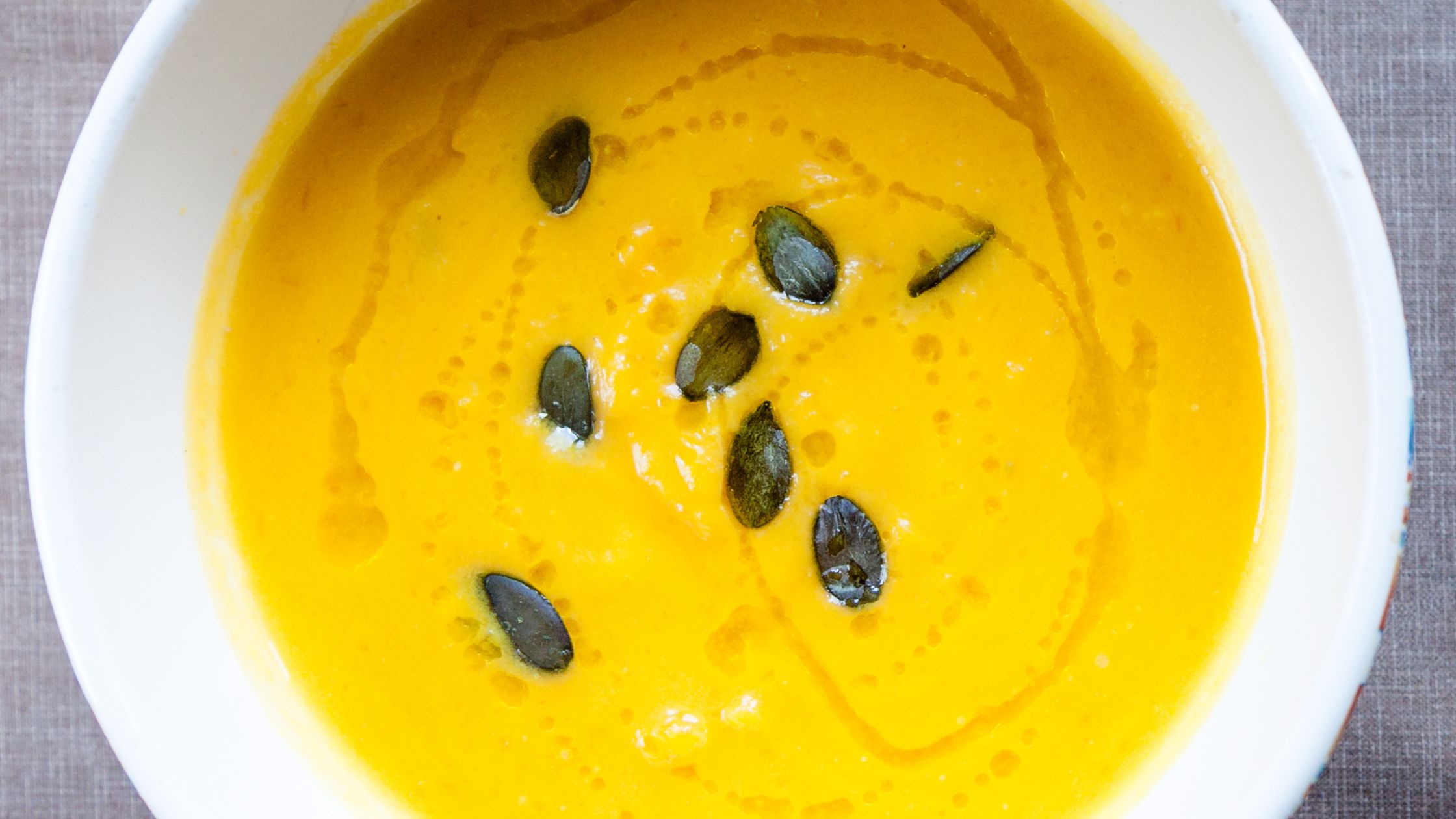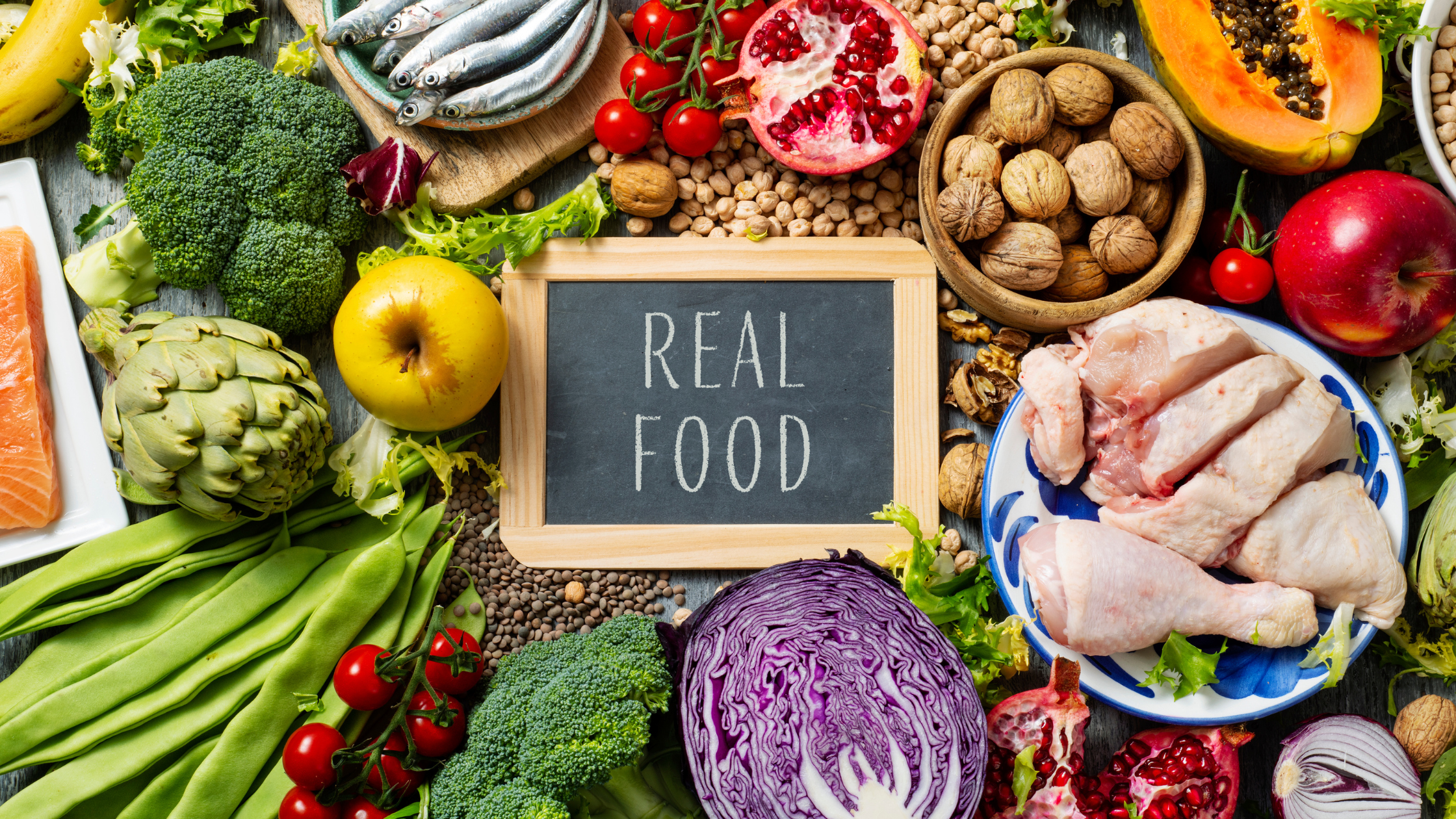
Category Archives: health


The Gratitude Issue
Gratitude is what's on my mind right now. We're at that annual cusp from old year to new. That time when so many people make resolutions, often unrealistic and undefined. And by doing so set themselves up to feel bad about themselves later. There are a number of studies that show how beneficial a gratitude practice can be, mentally, emotionally, and physically, to support our overall health and wellness.
The gratitude jar
I believe anytime is a perfect time to think about gratitude. But I especially love this ritual that I've built up over time around creating an abundance of gratitude in my life.
For the past few years I've had a jar sitting next to my desk in my office. When I have a moment of gratitude (and it can be for anything, not specifically for work, personal, others in my life) I write it down on a little scrap of paper and throw it in the jar. I confess that I try to find colorful scraps of paper because it's more fun that way. I don't go back through the jar throughout the year, I just keep filling it up.
Come New Year's Eve while I'm waiting for the countdown, I open the jar and empty it out. I unfold all those pieces of paper and savor reading them one by one. I do this by myself, but you may choose to do it with friends or family members too. It can be fun if it's a group jar or if several people bring their jars and go through them together.
I find I do remember many of them, but what always strikes me is the number of things that I forgot about. Every. Single. Year. These are moments I was grateful for when they happened, but in the hustle and bustle of everyday life they slipped into the back of my memory and got buried there. In opening this jar and going through them, I am grateful for those moments again.
Some people write all of their gratitudes down in a book that they keep from year to year. I have another friend who glues down all her little scraps into a composition book of gratitude. I don't do any of those things, mine go into the compost bin. But I truly love this ritual look back over the year. This ability in spite of any challenges or low moments we may have faced to see so many wonderful things. So many reasons to be grateful.
Once the jar is empty it almost seems to sparkle as I set it next to my desk to begin again. And it brings hope and a cheerful spirit as I anticipate the year ahead.
Cultivating a habit of gratitude
Being grateful doesn't always come easy. For some reason we are surrounded by a culture (and a news media) that brings out the worst in us. Often we get so overwhelmed that we allow the negative things to strongly influence how we percieve what is happening around us. Amidst the explosions of stress, worry, and overwhelming circumstance, the little sparks of gratitude can sometimes get lost. Just as we learn to read and write and do any of the other things we've learned to do in life, so too we need to learn to cultivate the habit of gratitude.
Below are some of my favorite resources and articles on the topic. I am not going to lie and tell you that I live in that blissed out place that is continual gratitude. I don't. I sometimes struggle to get there, to get anywhere close to being grateful. And yet I know I have to very much to be grateful for.
Yes we can get overwhelmed, sometimes we get lost. But I have come to believe that by remembering that concept of gratitude and by trying to pay attention to it I am happier overall. And so I've collected these resources and I have my ritual of the gratitude jar. I'm excited and looking forward to what this new year will bring.
As we transition to another year I hope that whatever the year ahead holds for you it also brings happiness, health, contentment, and peace.
Gratitude resources
How To Be Grateful To People We Don't Like – Learning to look at negative situations and focus on the good things we have can help us achieve a transformational shift. Admittedly this is not always easy to do, but sometimes having a resource we can turn to the guide us toward this can be helpful.
Gratefulness.org – A wonderful website offering videos, audios, articles, a virtual labyrinth, and virtual candles you can light. This is one of my favorite resources.
How Gratitude Can Change Your Life – A good article about gratitude with some information about how studies showing how it can improve your life.
Why Living a Life of Gratitude Can Make You Happy – A few suggestions for ways to add a gratitude practice to your life.
Stumbling Toward Gratitude – The end of this article sums it up well, ” There are no miracles. … There are no long-term quick fixes for happiness, so if you become a more grateful person and you add [these] exercises to your repertoire, you’ll be different six months or a year from now.”
9 Ways To Cultivate Gratitude – Nine suggestions for ways to cultivate gratitude (and avoid focusing on criticism or complaints)
A Serving of Gratitude May Save The Day – This New York Times article has some great suggestions and offers gentle ways to get started
And here's a video on gratitude that I found moving. Thanks to my Aunt for sharing it just when I needed it.
Gratitude: A Mindful Pause – if you happen to be in the market for a sweet gratitude journal. This one has both unlined and lined pages making it perfect for both writing and drawing, coloring, or art journaling.

Eating For Healthy Hair: The Best Foods For Hair Growth
Did you know that the health of your hair is closely tied to your gut health and overall wellness?
The nutrients we consume can have a significant impact on the growth and health of our hair follicles. That's why it's essential to understand how our diet and lifestyle choices can influence our hair's health.
To shed more light on this topic, we are joined by Julie Olson, an expert in hair and wellness. With her wealth of knowledge and experience in the field, Julie can help us better understand the key nutrients and lifestyle changes needed to promote healthy hair growth and prevent hair loss. So let's dive in!
The Role of Nutrition in Hair Health
Hair follicles require a complex array of nutrients to grow and remain healthy, including protein, vitamins, minerals, and healthy fats. However, simply consuming these nutrients is not enough; they must also be absorbed by the body for maximum benefit.
Many factors can impede nutrient absorption, such as poor gut health or autoimmune issues. This is why it is essential to address these underlying issues to improve hair health.
Contrary to popular belief, hair loss is not solely due to aging. It can also be caused by nutrient deficiencies, stress, hormonal imbalances, and other health issues.
Therefore, it is important to maintain a healthy gut by consuming a diet rich in fiber and fermented foods and avoiding processed foods and foods that trigger inflammation.
Key Nutrients for Hair Health
Hair follicles require a wide range of nutrients to grow and maintain health, and deficiencies in key nutrients can lead to hair thinning, dryness, and even hair loss. Here are some of the key nutrients that play a critical role in hair health:
Protein
Hair fibers are primarily made up of protein, which means that consuming enough protein is essential for healthy hair growth. Animal protein, in particular, is an excellent source of branch-chain amino acids, which are vital for building strong, healthy hair.
Sources: Grass-fed beef, chicken, turkey, fish, eggs, and dairy products like yogurt and cheese. It is important to choose grass-fed and organic sources of animal protein when possible, as these can provide higher levels of important nutrients and healthier fats for overall health.
Plant-based sources of protein like beans, lentils, nuts, and seeds can also contribute to a well-rounded diet for hair health.
Vitamin C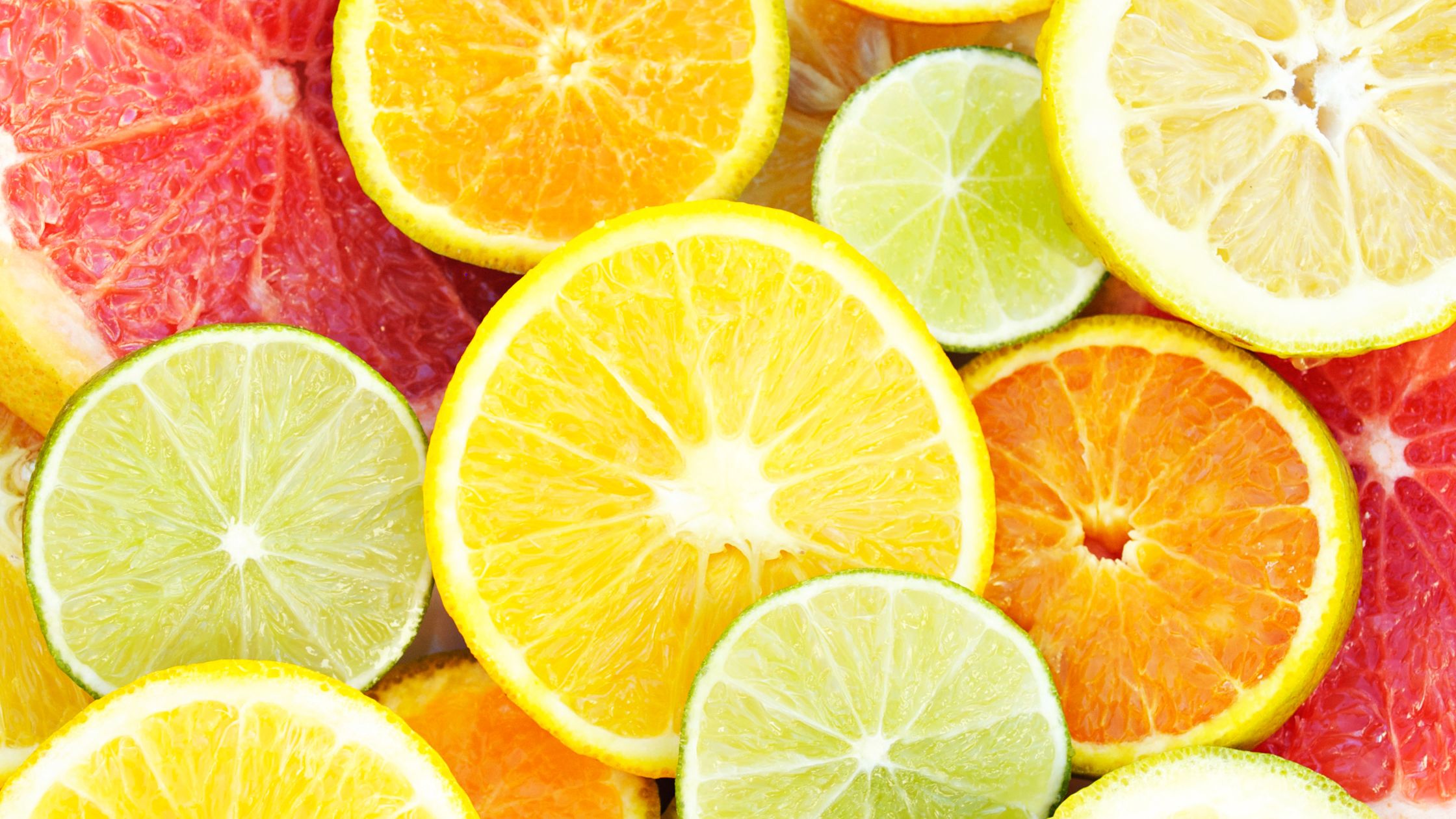
It can also aid in protein absorption.
Sources: citrus fruits, strawberries, and bell peppers.
Fat-soluble vitamins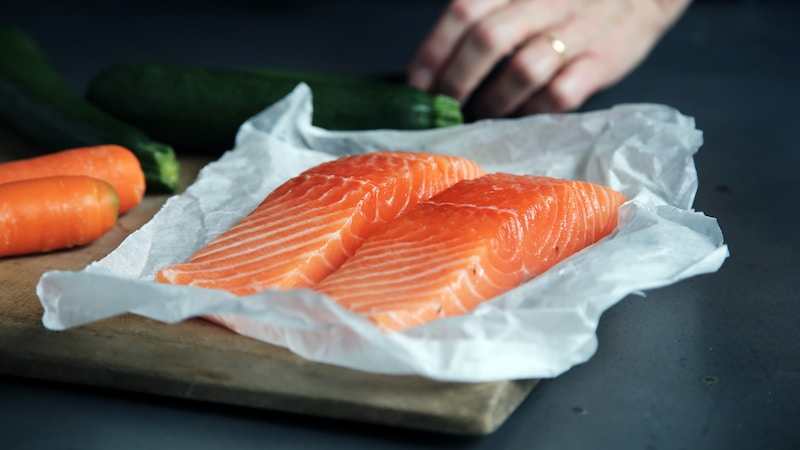
Vitamins D, A, and E are all crucial for hair health. Vitamin D plays a role in stimulating hair follicles and promoting growth, while vitamin A is essential for scalp health and stem cell growth. Vitamin E helps reduce the breakdown of hair follicles and provides moisture by soothing the oil glands.
Sources: Vitamin D can be obtained from fatty fish like salmon and tuna, egg yolks, and fortified foods like milk and cereal.
Vitamin A can be found in animal products like liver, eggs, and dairy, as well as in colorful fruits and vegetables like carrots, sweet potatoes, and spinach.
Vitamin E can be found in nuts and seeds like almonds and sunflower seeds, as well as in vegetable oils like olive and sunflower oil.
Healthy fats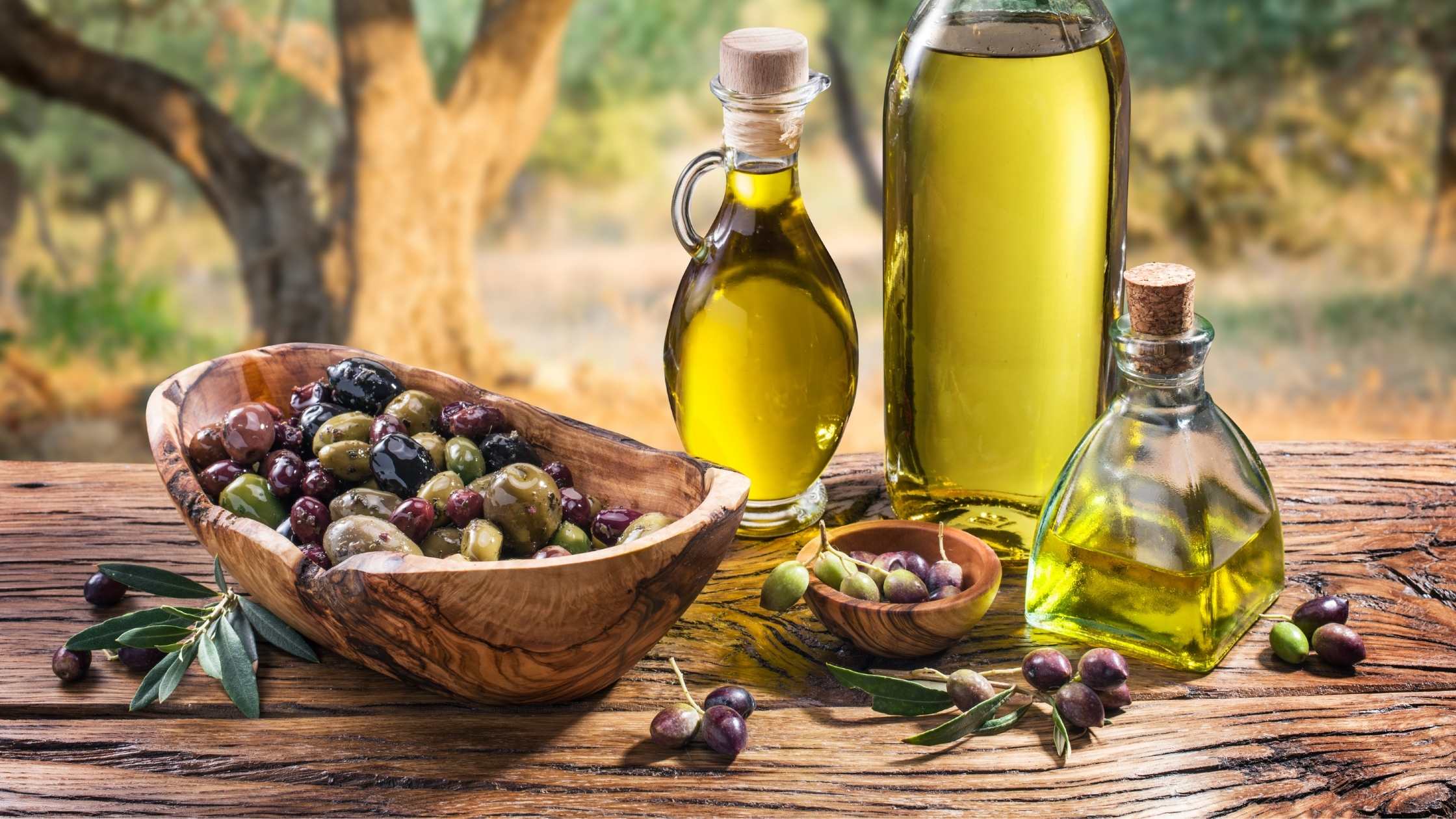
Healthy fats are important for hair health because they help the body absorb fat-soluble vitamins, such as vitamin D, vitamin A, and vitamin E, which are crucial for hair growth and maintenance.
Sources: Monounsaturated fats, such as those found in olive oil and avocados, as well as polyunsaturated fats, such as those found in fatty fish and nuts.
Walnuts, in particular, are a great source of alpha-linolenic acid (ALA), an omega-3 fatty acid that has been linked to hair growth and scalp health.
It is important to note that while certain types of fats are beneficial for hair health, saturated fats found in processed and fried foods should be avoided as they can contribute to inflammation and poor overall health.
Selenium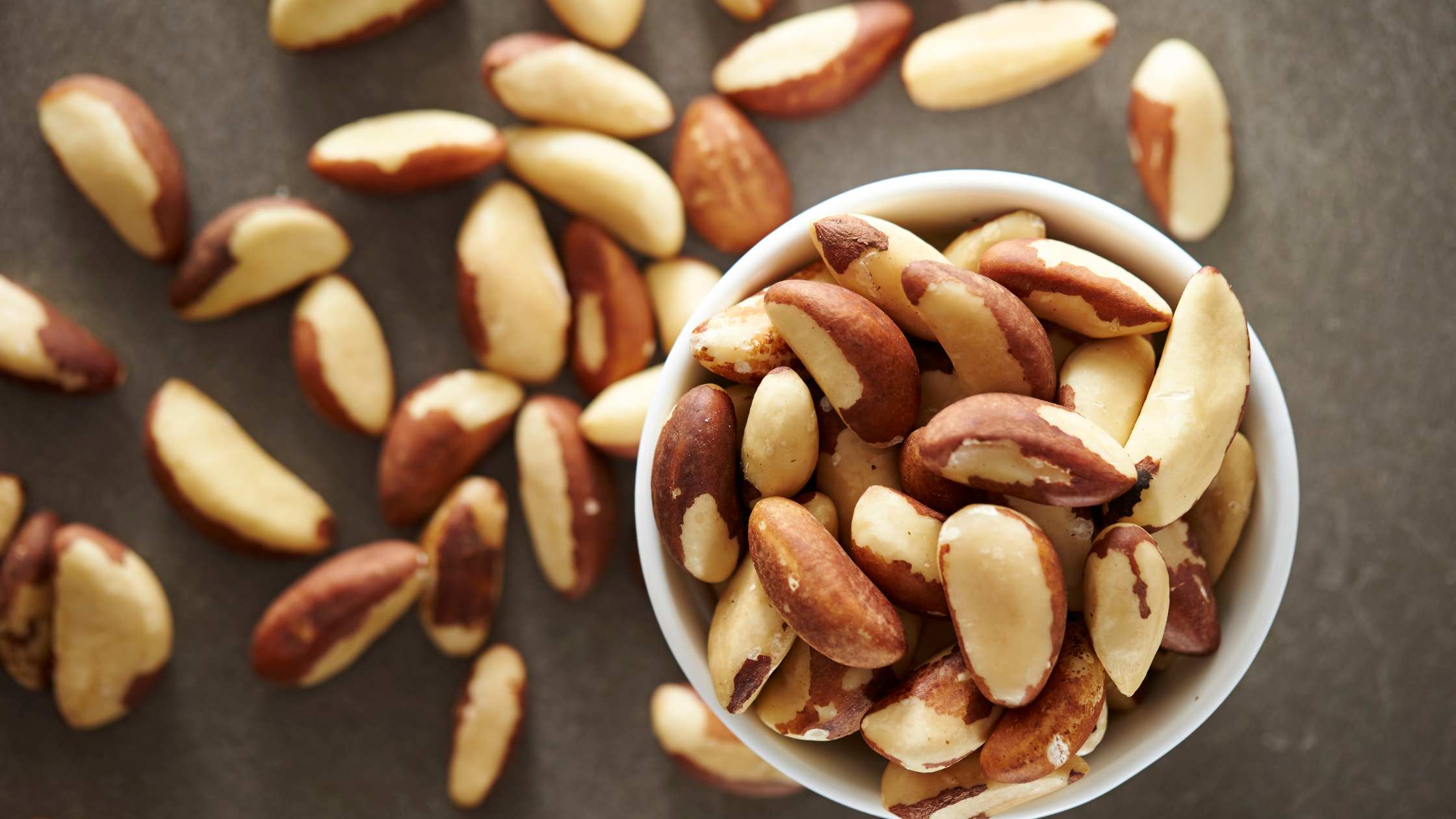
It is another key nutrient that aids in hair follicle formation and protection. However, it is important to consume selenium in moderation, as excessive consumption can lead to negative health effects. It is recommended to consume no more than 400 micrograms of selenium per day.
Sources: Brazil nuts, seafood (such as oysters, tuna, and crab), liver, and poultry.
Zinc
It is another important nutrient for hair health, as it is involved in tissue growth and repair.
Sources: Good dietary sources of zinc include liver, eggs, oysters, yogurt, and sunflower seeds.
Vitamin E and manganese 
Found in nuts and seeds and leafy greens can also benefit hair health.
Sources: Walnuts and Brazil nuts are especially beneficial, and soaking or sprouting nuts and seeds can make nutrients more absorbable.
B vitamins and niacin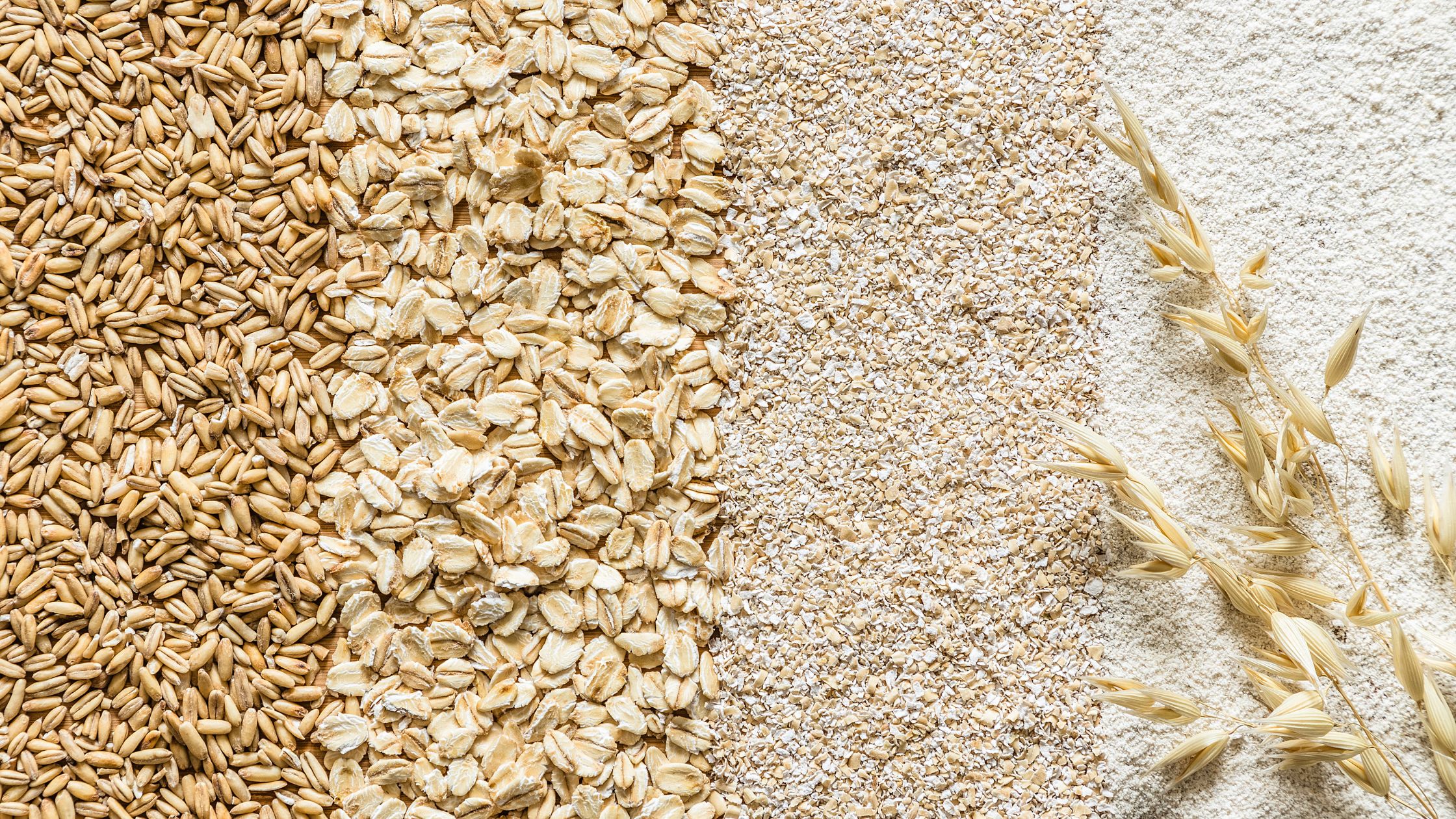
Niacin can help dilate capillaries and inhibit hair loss, but different people may have different reactions to it. It's important to note that taking niacin supplements can lead to adverse side effects and should be done under the guidance of a healthcare professional.
Sources: whole grains, leafy greens, legumes, nuts, and seeds. Good sources of niacin include poultry, fish, and whole grains.
Iron
Iron deficiency can lead to hair thinning and hair loss, making it an important nutrient to focus on for hair health. Essential for red blood cell production and oxygen transport to the hair follicles, iron promotes hair growth.
Sources: Good sources of iron include red meat, poultry, fish, beans, fortified cereals, and legumes, such as lentils, chickpeas, and beans.
Biotin Myth
Biotin, also known as vitamin B7, is often marketed as a hair growth supplement. Biotin is necessary for healthy hair growth and a deficiency in biotin can lead to dry, brittle hair prone to thinning. There is, however, little evidence to support the claim that biotin alone can stimulate hair growth.
Despite the benefits of biotin, there are downsides to taking high doses of this vitamin. One study found that taking excessive biotin supplements can actually harm hair health, leading to increased hair shedding and breakage.
It is important to listen to your holistic nutrition practitioner and be mindful of supplement intake, as it is possible to get too much biotin through supplements and fortified foods. One supplement that contains high levels of biotin may be counterproductive to hair health, so it is important to be aware of the dosage of biotin in supplements.
Keeping a food journal can also be beneficial in balancing nutrient intake, as biotin can be found in many common foods such as eggs, nuts, and whole grains. By consuming a varied and balanced diet, one can obtain the necessary amount of biotin for healthy hair growth without the risks associated with excessive supplement intake.
The Journey of Making Nutritional Changes
Making nutritional changes can be challenging for many people, especially when it comes to addressing hair health. Clients may struggle with implementing dietary changes due to various factors such as taste preferences, cultural upbringing, and limited access to certain foods.
Additionally, individuals with common food sensitivities or leaky gut issues may struggle with nutrient absorption, which can impact hair health. Therefore, it's important to address gut health as a part of any nutritional changes.
By working with a healthcare practitioner and making gradual dietary changes, clients can improve their gut health and nutrient absorption, ultimately leading to healthier hair.
Conclusion
Achieving healthy and strong hair is not just about using the right hair products but also about maintaining a balanced and nutritious diet.
Incorporating key nutrients such as protein, fat-soluble vitamins, healthy fats, zinc, selenium, and B vitamins can promote hair growth and prevent hair loss. It is important to obtain these nutrients from a variety of food sources, including grass-fed animal protein, fatty fish, nuts, seeds, leafy greens, and other superfoods.
Furthermore, paying attention to gut health and common food sensitivities can improve nutrient absorption and overall hair health. While making nutritional changes may come with challenges, it is important to work with a practitioner and keep a food journal to balance nutrient intake and optimize hair health.
By taking a holistic approach to hair care and nourishing the body from the inside out, you can achieve healthy and vibrant hair that shines with vitality.
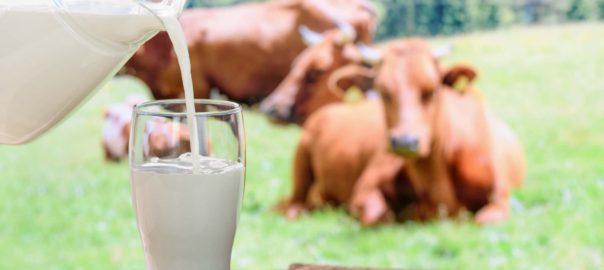
Organic Dairy Products Vs. Conventional Dairy
Recently I had a conversation with my friend Kay about dairy products which mostly centered on our family's decision to purchase organic milk products.
We choose to purchase organic milk, butter, cottage cheese, cream cheese, sour cream, and yogurt. Organic sliced cheese isn't easily available in our area so we have to bend there but we try to buy brands that at least promote that they do not use recombinant Bovine Growth Hormone (rBGH).
Supporting Organic Farming
Artificial Hormones and the Risks Involved
Genetic Effects of Hormones in Dairy
Health Benefits of Organic Dairy
Is Organic Dairy Worth the Extra Cost?
Is organic dairy more expensive? Yes. It is worth it? Absolutely. If you cannot make your budget stretch to cover organic dairy, I strongly urge you to not consume products tainted by rBGH. This website will give you a list of producers in your state who are artificial hormone free.

Detoxing The Right Way: Tips From Functional Healthcare Experts
Are you considering a detox to give your body a fresh start? While detoxing can have numerous benefits, it's important to do it the right way. Unfortunately, one of the most common mistakes people make when detoxing is powering through, even when they feel terrible. This approach can actually do more harm than good.
To help you detox safely and effectively, functional healthcare experts Bridgit Danner and Mira Dessy, The Ingredient Guru, share their insights on how to detox without feeling terrible.
What is Detox?
Detox, short for detoxification, is the process by which the body eliminates or neutralizes toxins, waste products, and other harmful substances. These substances can come from internal sources, such as metabolic waste, as well as external sources, such as pollutants in the environment or chemicals in food and personal care products.
The goal of detox is to support the body's natural processes of eliminating these harmful substances in order to improve overall health and well-being. Detox methods can include dietary changes, fasting, exercise, saunas, and other techniques that support the body's natural detoxification processes.
Common Detox Symptoms
One of the biggest challenges people face when starting a detox program is dealing with the symptoms that can arise. Bridgit explained that when you start eliminating toxins from your body, you may experience symptoms such as headaches, fatigue, irritability, and digestive issues.
These symptoms can be caused by a number of factors, such as caffeine withdrawal, constipation, and dehydration.
To make the detox process easier on yourself, our experts recommend cutting down on caffeine gradually before starting a detox program, staying hydrated, and taking Epsom salt baths or naps to help your body deal with the extra workload.
Supporting Your Body During Detox
While detox programs can be beneficial, our experts emphasized the importance of supporting your body during the process. This means providing your body with the nutrients it needs to function properly and avoiding programs that are too restrictive or fasting-focused.
Stay hydrated
One of the most crucial factors for successful detoxification that is often overlooked is hydration. It helps the body eliminate toxins through various routes, including the kidneys, bowels, sweat, breath, and skin. Therefore, it's essential to drink enough water and stay hydrated throughout the detoxification process.
Eat a healthy diet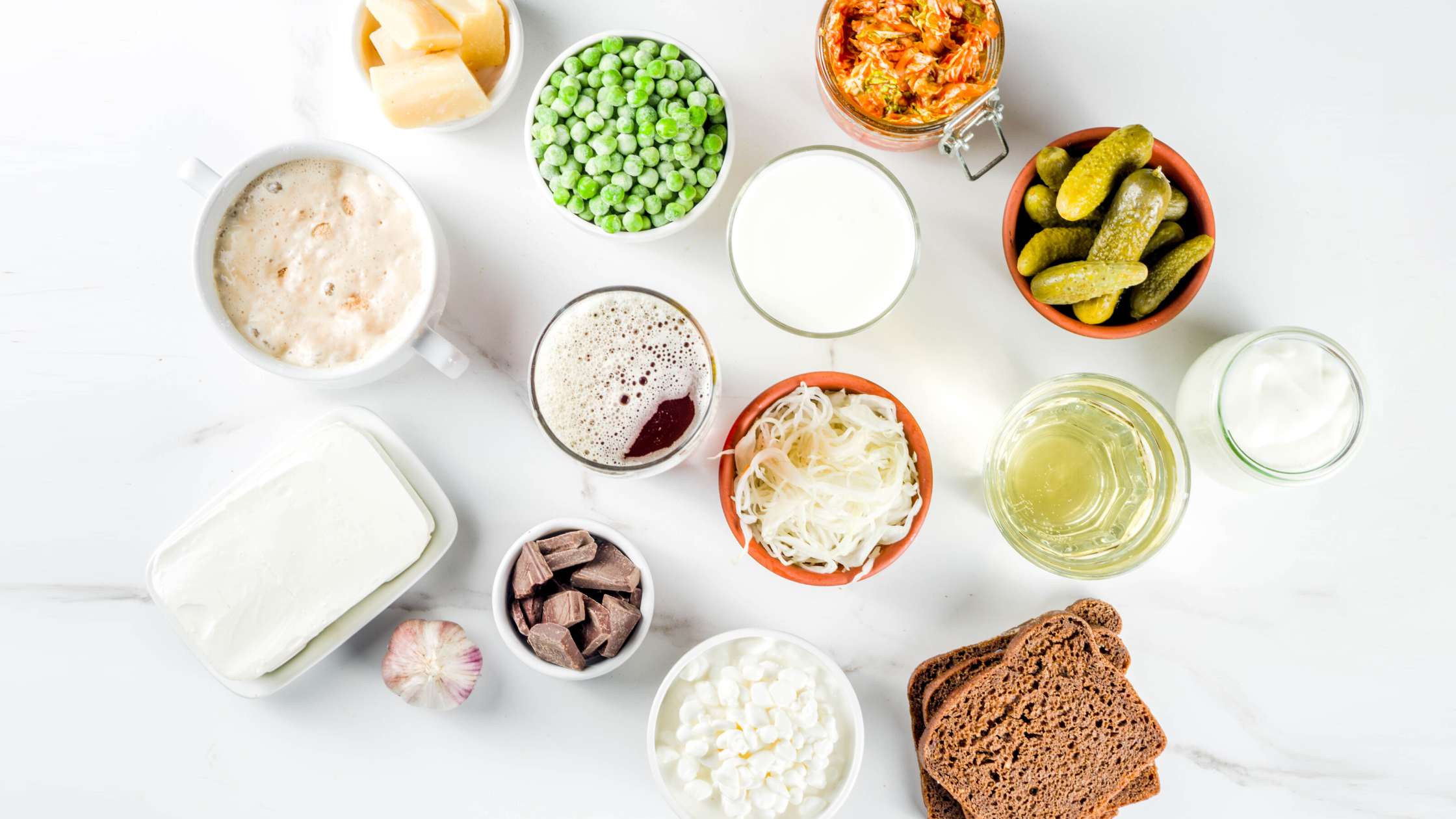
It's important to maintain a balance between detoxification and nutrition to ensure that the body has adequate resources to eliminate toxins effectively.
Choose foods that are high in fiber and nutrients, and low in sugar and processed ingredients. This can help to support your liver and other organs of detoxification.
Dry brushing 
This is a simple but effective way to support your body's natural detoxification processes. By brushing the skin in a circular motion, it stimulates lymphatic flow and improves circulation. This can help to move toxins out of the body and reduce inflammation.
Coffee enema
Photo by: serra boten on Flickr
Another practice that Bridgit recommends is coffee enema. It involves inserting coffee into the rectum and colon, with the aim of detoxifying the liver and improving digestion. The idea is that the caffeine in the coffee stimulates the liver to produce bile, which in turn helps to flush out toxins from the body.
While this may sound like an uncomfortable process, proponents of coffee enemas can have a number of health benefits, including improved digestion, increased energy, and clearer skin.
Coffee enemas can be a powerful tool for detoxification and improved digestion, but they are not for everyone. Bridgit advises that people with certain health conditions, such as fissures, prolapse hemorrhoids, or any kind of tissue damage, should not try coffee enemas. Additionally, people who are older or have mobility issues may find it difficult to perform the enema properly.
For those who are interested in trying coffee enemas, she recommends starting slowly and gradually working up to higher amounts of coffee over time. She also advises speaking with a healthcare practitioner before trying coffee enemas to ensure they are safe for you.
Supplements
Supplements play a crucial role in supporting the body's natural cleansing processes. Here are some of the supplements that were recommended:
Electrolyte
When you're detoxing, you need to hydrate a lot, which can cause you to lose water-soluble vitamins. Electrolytes are essential for replenishing these vitamins and keeping your body hydrated. Look for a sugar-free electrolyte supplement with B vitamins, vitamin C, and herbal antioxidants to support liver function and detoxification.
Binders
Binders are substances that bind to toxins, mainly in the bowel, to help remove them from the body. A binder supplement can help move toxins out of the body and prevent their reabsorption, which can happen if you're constipated. Look for a bowel-based binder with ingredients that can also help move your bowels, such as magnesium or psyllium husk.
Fiber
Fiber is another essential nutrient that can support detoxification by promoting regular bowel movements. Fiber can help remove toxins and waste products from the body, preventing their reabsorption. Consider taking a fiber supplement in the morning to help with elimination throughout the day.
Potassium
Potassium is an electrolyte that is essential for proper nerve and muscle function. It can also support healthy digestion and regular bowel movements. If you're not getting enough potassium in your diet, consider adding a potassium supplement to your routine.
Additionally, magnesium supplements, digestive enzymes, and prokinetics can help to stimulate the bowels and promote regular elimination.
Conclusion
Detoxification requires a holistic approach that involves building awareness of your body, identifying your needs, and meeting those needs. It is crucial to check in with your body regularly and make adjustments as needed.
Incorporating practices like dry brushing, functional supplemental support, and coffee enemas can help to promote greater body awareness and support the detoxification process.
As we age, it is essential to remain curious and not give up on maintaining our health. By adopting healthy habits and engaging in ongoing self-exploration, you can optimize your well-being and lead a vibrant life.
Note: Bridgit is offering a FREE Toxic Mold Masterclass this coming Feb. 27 – March 5, 2023! Learn what steps you can take at home to recover from toxic mold exposure. Sign up today!
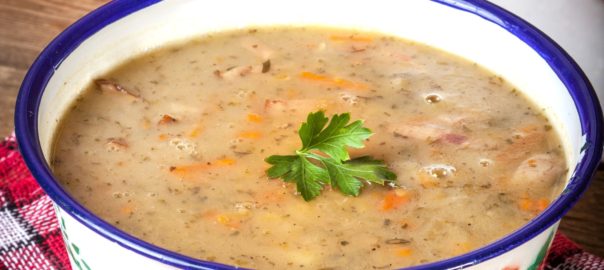
The Health Benefits Of Soup
Soup is a wonderful comfort food. There is just something special about a nice warm bowl of soup that can make us feel better. Plus it turns out that soup is a great health food and has been nourishing the people of the world for literally thousands of years.
Soups have been around as long as man had the ability to cook in a pot - about 16,000 years. Combining various ingredients into a large pot to create nutritious, filling, easy to digest, and simple to serve meals has worked well for many different cultures and continues to do so.
Benefits of Soup
There are a number of health benefits when it comes to eating soup. Breaking them down by category we discover the following:
1. Quality of Diet
One study showed that those that eat more soup had an improved overall diet quality. Depending on the ingredients, soup can be a way to increase your intake of vitamins, minerals, and fiber intake – all of which are great for your health. This is also correlated to the potential for better weight management.
2. Hydration
Soup offers additional hydration due to the water, stock, or broth that is its base. For some people soup may be another option for improving your hydration.
3. Veggies
Eating the daily recommended amount of vegetables can sometimes be a challenge. Soup can be a good way to help support this need as it often contains veggies. It’s a great place to use those vegetables that might not be crisp enough to be eaten raw but will work great in a soup. Adding slightly past prime but still edible veggies to your soup is also a way to avoid food waste.
4. Satiety
Keeping your body satisfied with a “full” feeling can go a long way toward reducing mindless, bored snacking. You can improve that feeling of fullness, called satiety, when you add soup to your menu. Studies have that consuming soups can lead to a reduction of hunger pangs and an increase of a feeling of fullness. Soups were found to be helpful because for many soups the ingredients in them often require chewing which helps with satiety. This may account for lower body weight among people who consume soup. It is often served early in a meal because it can stimulate your gastrointestinal response – it gets your system ready to digest your food.
5. Nourishing Bump
Soup is wonderful in an of itself, however it also presents an opportunity to get more nutritional density in your diet. By using bone broth instead of water you add even more nutrients to the soup. This is because bone broth can add additional amino acids which are used to make proteins. The amino acids have a wide range of benefits, they can:
- help break down your food
- grow and repair tissue
- make hormones
- support brain chemicals
- build muscle
- boost your immune system
- and maintain healthy skin, hair, and nails.
When using bone broth instead of water it provides collagen, the primary substance which makes up connective tissue in your body. Collagen provides structure, strength, and support, and also used to repair tissues such as bone, tendons, ligaments, and skin.
What about chicken soup?
Chicken soup is what you typically think about when you’re feeling under the weather. Some people even refer to chicken soup as Nana’s Penicillin. As it turns out there’s a good reason for that.
Studies have shown that chicken soup may help clear nasal congestion and alleviate other cold symptoms. Plus it’s mostly liquid so it’s helping with hydration which is important when you’re under the weather.
Chicken soup is also high in tryptophan may help support that feeling of “comfort”. The veggies can add vitamins along with other antioxidants and minerals all of which help to build your immune system and reduce inflammation.
Now you can see why many cultures have used soups to nourish themselves and their families for so long. There are soups for every season served hot, cold, thick or thin – the possibilities are endless. Soup recipes are also extremely flexible allowing for a tremendous amount of creativity. Enjoy a wonderful bowl of soup knowing you are investing in your health.
Sources
- Deshmukh SN, Dive AM, Moharil R, Munde P. Enigmatic insight into collagen. J Oral Maxillofac Pathol. 2016 May-Aug;20(2):276-83. doi: 10.4103/0973-029X.185932. PMID: 27601823; PMCID: PMC4989561.
- Mattes R. Soup and satiety. Physiol Behav. 2005 Jan 17;83(5):739-47. doi: 10.1016/j.physbeh.2004.09.021. Epub 2004 Nov 11. PMID: 15639159.
- Rennard BO, Ertl RF, Gossman GL, Robbins RA, Rennard SI. Chicken soup inhibits neutrophil chemotaxis in vitro. Chest. 2000 Oct;118(4):1150-7. doi: 10.1378/chest.118.4.1150. PMID: 11035691.
- Zhu Y, Hollis JH. Soup consumption is associated with a lower dietary energy density and a better diet quality in US adults. Br J Nutr. 2014 Apr 28;111(8):1474-80. doi: 10.1017/S0007114513003954. Epub 2014 Jan 2. PMID: 24382211.
Healthy & Hearty Soup Recipes
Learn the health benefits of soup plus get 15 delicious recipes to help you celebrate this wonderful food anytime.
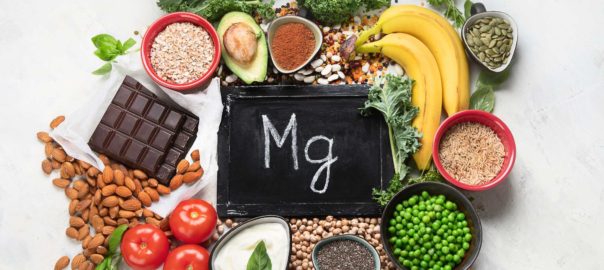
8 Magnesium Health Benefits
Magnesium is a mineral that is found in the earth, in whole foods, and in our bodies. Although it is essential for maintaining optimal health, many Americans may not be getting enough magnesium in their diets.
The popularity of processed foods and refined grains in the grocery stores plus consuming a diet lacking in whole foods, like a variety of colorful fruits and vegetables, can lead to insufficient amounts of magnesium in your diet. When foods are processed and grains are refined, this results in the loss of important nutrients and minerals such as magnesium. Another contributing factor for a lack of magnesium in our diets is how modern agriculture and farming practices have degraded the soil. This has resulted in decreasing amounts of minerals and other nutrients found in fruits and vegetables. Studies have shown that the magnesium content in fruits and vegetables has decreased by 20-30% over the last 60 years.
Magnesium Health Benefits
Magnesium plays a fundamental part in our health including its crucial role in hundreds of enzymatic reactions in the body, the benefits for brain and cardiovascular health, blood sugar balance, and bone health. Additionally, magnesium may decrease depression, help reduce migraines, and promote better sleep. It’s also highly anti-inflammatory.
1. Magnesium’s Role in Enzymatic Reactions
The human body is sustained by the reactions of enzymes. Enzymes are biological molecules that require a cofactor or “helper molecule” to perform accelerated chemical reactions. Magnesium is an organic and metallic ion that plays a big role as a cofactor to enzymes and enzymatic reactions. These enzymatic reactions, that are essential for the human body to function, include
- energy production
- respiration
- digestion
- detoxification
- hormone production
- protein synthesis
- and cell growth to name just a few
An enzymatic reaction can even create movement to make your muscles contract. Enzymes rely on cofactors which can be from vitamins or essential minerals such as magnesium. Therefore, it is crucial to have a sufficient amount of such cofactors in order to allow these enzymes to perform their crucial functions.
2. Brain Health: Improving Cognition in Alzheimer’s Disease
When we hear about Alzheimer’s disease, the first thing that comes to mind is memory loss. Memory loss and behavioral changes are symptoms of Alzheimer’s disease due to the atrophy or shrinking of the hippocampus structure within the brain.
The hippocampus consists of two hippocampi located within inner portion of the temporal lobes of the brain. It is the portion of the brain responsible for forming new memories, emotions, and memory consolidation, which is taking new memories and sending them off to the cortex of brain for long-term memory storage.
Other causes of atrophy of the hippocampus include age or injury. Nutrients such as vitamins and minerals provide support for brain function. Magnesium is one of the essential minerals that provide this support. Studies have found that magnesium, when paired with the amino acid threonine, is delivered to the brain which resulted in the improvement of cognition. In his book, The End of Alzheimer’s Program, by Dr. Dale Bredesen, supplementing with magnesium L-threonate is recommended since it is a more neural bioavailable form.
3. More Brain Health: May Decrease Depression
Another area of interest in clinical trials involving magnesium is its effects on people dealing with mental disorders, particularly depression. Some studies have revealed lower levels of magnesium concentration in the blood serum of people with depression. It is known that the role magnesium plays in the brain includes its optimization for nerve transmission, it induces synaptic neuroplasticity, and it enhances the proliferation of stem cells and neurite growth.
Oral magnesium supplements are currently being used as non-pharmacologic treatment as well as with pharmacology in the treatment of depression and other psychologic disorders and have shown some promise in clinical settings. Moreover, a combination of increased dietary magnesium along with supplemental magnesium is encouraging for the improvement of depression.
4. Magnesium for Good Sleep
The quality of sleep may be affected by many factors such as stress, which raises cortisol levels, physiological issues such as restless legs syndrome, over-stimulation from electronic devices, and the environment in which you sleep. Having a good bedtime routine can help improve the quality of sleep.
Some good bedtime habits include turning of electronic devices off 30 or more minutes before bed and using blue light filters on electronic devices. You can minimize EMF exposure in your bedroom by turning off electronic devices and keeping them away from your bed, keeping your bedroom dark, and having a good routine to wind down before bedtime.
In addition to proper sleep hygiene, taking magnesium can help promote good sleep. Studies have shown that magnesium supplementation taken before bed could help with restless legs syndrome and provide a more restful sleep. Magnesium’s role in improving sleep quality has also been demonstrated by its ability to increase melatonin and decrease circulating cortisol.
5. Magnesium’s Role in Cardiovascular Health and Anti-Inflammatory Effects
A healthy working heart and vascular system relies on many working parts to supply the organs, and tissues of your body with blood containing nutrients and oxygen. In return, blood containing carbon dioxide is pumped to the lungs to be exhaled. Magnesium is essential for the functions of the heart and vasculature, helping to regulate the electrical activity of the heart which is responsible for controlling the rate and rhythm of the heartbeat.
It also influences the heart’s ability to contract and has anti-inflammatory properties to promote vasodilation. Magnesium deficiency can contribute to oxidative stress which can lead to a serious condition of inflammation of the endothelium, the single-celled layer lining of the blood vessels and arteries. This level of inflammation can lead to irregular heart rhythm, cardiac shock or heart failure. Magnesium also has been shown to be beneficial for blood pressure maintenance by inducing vasodilation.
6. Magnesium May Prevent Migraines
Debilitating and painful, migraine headaches are caused by an instability of blood vessels in the head. This can be described as excessive constriction of blood vessels in the head and followed by increased blood flow.
Migraines can have many factors leading to their onset including
- food allergies
- food additives
- stress
- hormonal changes
- lack of sleep
- eye strain
- and barometric pressure changes in the weather.
Low levels of magnesium in cerebral spinal fluid can result in neuronal excitability for some migraine sufferers. During a migraine episode a person can suffer low blood pressure and be lacking in nitric oxide which the body produces to support vasodilation which modulates blood flow to the brain.
Clinical application of magnesium used intravenously in the form of magnesium sulfate has been used to treat migraine patients. Increasing dietary magnesium and supplementing with magnesium may help with the prevention of migraines.
7. Role in Bone Health
The human skeletal system of bone structure is continuously changing by a process called bone remodeling. During this process, bone tissue is removed by osteoclasts and new bone tissue is formed by osteoblasts. Sufficient magnesium supports the process of new bone tissue whereas a deficiency of magnesium is associated with increased osteoclastic bone resorption.
This means that more bone is taken away than new bone mineralization, or new bone formation. Osteoporosis can happen when this imbalance occurs, resulting in weakness and fragility to the bone structure. Studies have shown a low magnesium status in women with osteoporosis. Low magnesium in men also shows a correlation of increased fracture risk.
8. Role in Blood Glucose (Sugar) Balance
Glucose is the body’s main source of energy, it comes from the breakdown of the food we eat, primarily carbohydrates. The presence of glucose in the bloodstream signals the pancreas to secrete insulin, a hormone that regulates blood glucose levels and helps deliver glucose to the cells in your muscles, fat, and liver where it is used or stored as glycogen.
When blood glucose gets low, stored glycogen can be converted into glucose for energy. When blood glucose levels remain high, insulin signaling can get disrupted and the uptake of blood glucose from the muscle, fat, and liver cells becomes impaired, resulting in the resistance of insulin’s normal function. Insulin resistance can lead to metabolic syndrome, prediabetes, or type II diabetes.
Studies and clinical trials have associated magnesium deficiency with increased risks in these diseases brought on by blood glucose dysregulation. Magnesium is essential in its role of glucose regulation and homeostasis actions of insulin.
Sources of Magnesium
Many health conditions have been associated with low levels of magnesium,
which may be remedied by including more magnesium-rich foods in our diet. Some of the best food sources of magnesium include leafy greens, nuts and seeds, whole grains, beans, and even dark chocolate.
The graph below demonstrates some the best food sources and amounts of magnesium from these foods:
Food | Amount | Amount of magnesium |
Swiss Chard (cooked) | 1 cup | 172 mg |
Boiled spinach | 1 cup | 157 mg |
White beans | ½ cup | 190 mg |
Black beans | ½ cup | 171 mg |
Pumpkin seeds | 1 oz (142 seeds) | 168 mg |
Brazil nuts | 6 nuts | 107 mg |
Almonds | 1 oz (23 nuts) | 77 mg |
Mackerel fish | 3 oz cooked | 82 mg |
Avocado | 1 fruit | 58 mg |
Dark Chocolate 70-85% cacao | 1 oz (1/3 of a bar) | 76 mg |
In addition to increasing dietary magnesium, taking magnesium supplements might be needed when dealing with certain health conditions.
Magnesium supplementation is available in different forms
- magnesium citrate
- magnesium glycinate
- magnesium threonate
- and magnesium malate
Various magnesium supplement formulations can vary in their absorption in the small intestine. More research is still needed to learn if the bioavailability of a certain supplement formula is affected.
It is best to not exceed the recommended dosage of a supplement. It is also good to check with a health care professional about taking a new supplement, especially if you are taking prescribed medications. Health science has gained great awareness of the effects of magnesium deficiency and how to improve levels of this essential mineral to optimize health.
Sources
Botturi, A., Ciappolino, V., Delvecchio, G., Boscutti, A., Viscardi, B., & Brambilla, P. (2020). The Role and the Effect of Magnesium in Mental Disorders: A Systematic Review. Nutrients, 12(6), 1661. https://doi.org/10.3390/nu12061661
Bredesen, D (2017). The end of alzheimer’s. New York, NY: Penguin Random House LLC.
Bredesen, D (2020). The end of alzheimer’s program. New York, NY: Penguin Random House LLC.
de Baaij, J. H., Hoenderop, J. G., & Bindels, R. J. (2015). Magnesium in man: implications for health and disease. Physiological reviews, 95(1), 1–46. https://doi.org/10.1152/physrev.00012.2014
Liu, G., Weinger, J. G., Lu, Z. L., Xue, F., & Sadeghpour, S. (2016). Efficacy and Safety of MMFS-01, a Synapse Density Enhancer, for Treating Cognitive Impairment in Older Adults: A Randomized, Double-Blind, Placebo-Controlled Trial. Journal of Alzheimer's disease: JAD, 49(4), 971–990. https://doi.org/10.3233/JAD-150538
Murray, M. Pizzorno, J (2012). The encyclopedia of natural medicine. New York, NY: Atria
Nakrani MN, Wineland RH, Anjum F. Physiology, Glucose Metabolism. [Updated 2022 Jul 25]. In: StatPearls [Internet]. Treasure Island (FL): StatPearls Publishing; 2022 Jan-. Available from: https://www.ncbi.nlm.nih.gov/books/NBK560599/
Razzaque M. S. (2018). Magnesium: Are We Consuming Enough?. Nutrients, 10(12), 1863. https://doi.org/10.3390/nu10121863
Tarleton, E. K., & Littenberg, B. (2015). Magnesium intake and depression in adults. Journal of the American Board of Family Medicine: JABFM, 28(2), 249–256. https://doi.org/10.3122/jabfm.2015.02.140176Retrieved on 1/17/2023 from: https://lpi.oreg
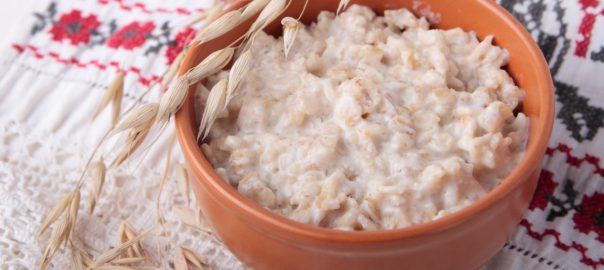
Oats: Types, Health Benefits, And Easy Recipes
Winter is coming and those colder days seem like the perfect time for a bowl of oatmeal in the morning. I frequently get questions wanting to know if oats are okay to eat. The answer? It depends.
Oats have been consumed for more than 2000 years in many places around the world. There is good reason for this; it’s because of the many health benefits of this grain. Some people may not choose to consume oats because of concerns about carbohydrates. But as long as you do not have a sensitivity or a dietary protocol that calls for you to avoid them, oats are a wonderful food and are can be good for us.
The health benefits of oats
Scientific studies of the health-beneficial properties of oats show the benefits of them can include:
- the ability to reduce cholesterol
- may help reduce cardiovascular disease
- can help stabilize blood sugar
- supportive for improved gut microbiota colonies
- may help reduce obesity
- possibly support reducing inflammation
Nutritionally oats provide manganese, selenium, tryptophan, phosphorus, magnesium, and several B vitamins. They even provide a modest amount of protein (6 g per cup). And they’re high in both soluble and insoluble fiber.
Soluble fiber is easily digested and helps the body by slowing down how quickly it can process simple starches and sugars. Soluble fiber also breaks down within the digestive tract, binding with cholesterol and thereby escorting it out of the body.
Insoluble fiber cannot be digested and helps to create bulkier stools which move through the system more quickly. They also help mitigate certain bile acids.
Do oats have gluten?
When it comes to oats there are two questions I get asked a lot
- Do oats have gluten
- What’s the difference between oats and barley
Oats and barley are not the same, they are two completely different grains. Barley has gluten so if you have gluten intolerance issues or Celiac Disease (CD) you cannot eat it, ever. If you think you have CD, I encourage you to get genetically. If you do not test positive for Celiac Disease but feel that there is a gluten intolerance, you’ll want to work with someone as you go through an elimination diet.
When it comes to oats all of the research I have found indicates that oats do not have gluten in them. However, they are frequently grown near wheat or processed in the same facility as wheat or transported with wheat. This means that cross-contamination is an issue. For those with CD there are concerns that the proteins in oats may still present a problem. It is recommended that they be added to the diet with caution and only after all CD symptoms are resolved and there has been adherence to a strict gluten free diet for at least six months
There are some companies that advertise gluten-free oats. They keep separate gluten-free facilities if they happen to produce gluten-containing foods as well. If gluten is an issue for you it’s important to get certified gluten-free oats to be sure there’s no cross contamination.
Different kinds of oats
There are different forms of oats available, this is important to keep in mind when choosing which ones to eat.
Quick or instant oatmeal – this is not a good choice because the oats are rolled into flakes and then cut up broken down. This form of oatmeal goes through your body too quickly and can affect blood sugar levels. It's also highly processed which typically means less nutritious. This tends to be the type of oats present in those quick fix oatmeal packets.
Old fashioned or rolled oats – these are a good option. Some of the bran is removed during the rolling, or flaking process, but this is still a lower process version. It tends to be the one recommended for cereals, and for use in other recipes. Rolled oats may
Oat groats – the groats are the whole grain, meaning they have all of the fiber and the beneficial germ. These take a long time to cook and are very chewy and dense. Due to the high level of fiber these take a long time to cook. The groats are also what is ground up and used to make oat flour.
Steel cut oats – these are sometimes also called Irish Oats. For steel-cut oats the groat has been cut apart into smaller pieces. Because it’s still very dense and not rolled, steel cut oats can take a while to cook, but not as long as groats.
Oat bran – the bran is the outer coating of the groat and has the most fiber. This is sometimes removed from the groat and packaged for use either as a cereal or to put into other recipes to increase the fiber content.
Recipes
One cup of oats per day is beneficial, especially if you have high cholesterol or are looking for foods to help stabilize blood sugar. Below are a few of my favorite recipes using oats.
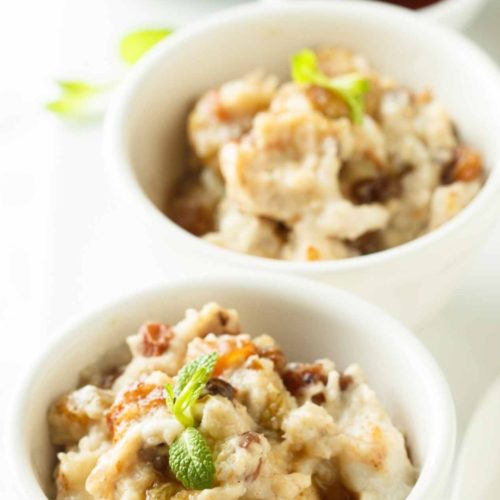
Freydis' Fabulous Pudding
Ingredients
- 1 C. steel cut oatmeal
- 4 C. water
- 1 C. milk
- 2 eggs
- 1 C. sucanat
- 2 T. butter
- 1/2 t. ground cinnamon
- 1/2 C. raisins
Instructions
- Toast the oatmeal in a pan until lightly browned
- Bring the water to a boil, add the oatmeal, reduce heat and cook 20 minutes until done
- Preheat oven to 350 deg F
- Oil the inside of a 1.5 quart baking dish
- In a large bowl mix together milk, eggs, sucanat, butter and cinnamon
- Add in raisins and oatmeal
- Pour into baking dish
- Bake 30-35 minutes until doneCan be served warm, room temperature or cold. Option: Sometimes I vary this by substituting apple pie spice for the cinnamon and chopped dried apple for the raisins. Delicious! Enjoy!
If you’re looking for a quick and easy breakfast that’s ready when you wake up the solution is overnight oats. This recipe goes together very easily and adds a little Greek yogurt for an extra protein boost. The recipe can easily be doubled or tripled if there are multiple family members to feed or if you’re looking to get a head start on the next three days.
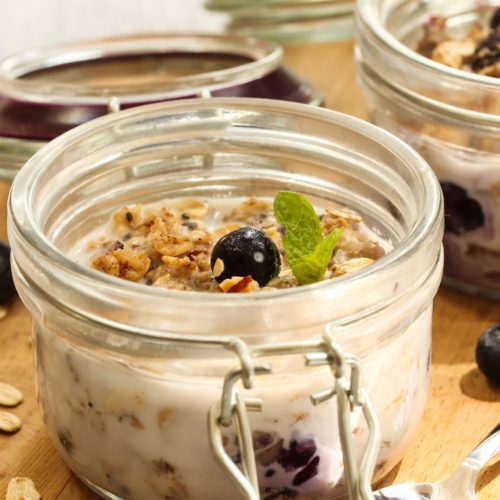
Blueberry Overnight Oats
Ingredients
- ⅓ cup old-fashioned oats
- ⅓ cup plain organic, whole milk Greek yogurt
- ⅓ cup plain almond milk
- 1 tablespoon chia seeds
- ½ tablespoon or honey
- 1 teaspoon vanilla extract
- ¼ teaspoon cinnamon
- ¼ cup organic blueberries
Instructions
- In a medium mixing bowl combine oats, almond milk, chia seeds, yogurt, honey, and vanilla until fully combined
- Cover the bowl and place in the refrigerator overnight
- In the morning serve oatmeal into two containers
- Top with cinnamon and blueberriesEnjoy!
Cinnamon is a favorite way to flavor oatmeal. This is a warm and simple way to start your day. And as I know from when I had kids in the house, this recipe quadruples easily. If you’re looking for a slightly more flavorful punch you can substitute pumpkin pie spice for the cinnamon.
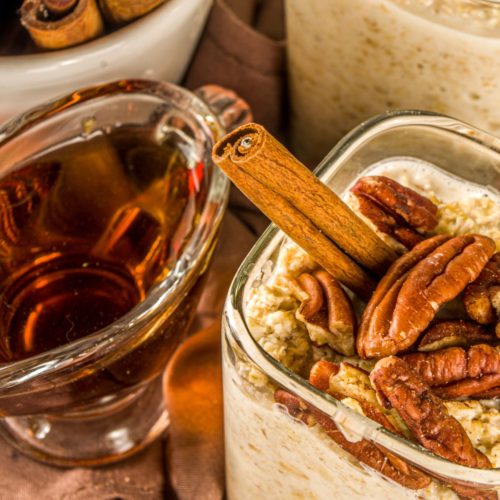
Simple Cinnamon Oatmeal
Ingredients
- ½ cup of water
- ¾ cups old-fashioned rolled oats
- ⅛ teaspoon salt
- 1 cup almond milk
- ¼ teaspoon real vanilla
- 1 tablespoon organic butter
- Toppings: cinnamon, maple syrup, and chopped almonds
Instructions
- Put the water in a small pan and bring it to a boil
- Add the oats, salt, and ¾ cup of milk
- Reduce heat to a simmer for 4 - 5 minutes
- Stir in the butter and remaining milk
- Remove pan from heat and let the mixture cool slightly
- Stir in vanilla, add toppings and serve
Sources
Dioum, El Hadji M. et al. “Oats Lower Age-Related Systemic Chronic Inflammation (Iage) In Adults At Risk For Cardiovascular Disease”. Nutrients, vol 14, no. 21, 2022, p. 4471. MDPI AG, doi:10.3390/nu14214471.
Martinez-Villaluenga, C. and Penas, E. Health Benefits of Oat: Current Evidence and Molecular Mechanisms. Institute of Food Science. Technology and Nutrition (ICTAN-CSIC), Juan de la Cierva 3, 28006 Madrid, Spain. 23 January 2017. https://doi.org/10.1016/j.cofs.2017.01.004
Paudel, D.; Dhungana, B.; Caffe, M.; Krishnan, P. A Review of Health-Beneficial Properties of Oats. Foods 2021, 10, 2591. https://doi.org/10.3390/foods10112591
Spector Cohen, Inna et al. “To Be Oats Or Not To Be? An Update On The Ongoing Debate On Oats For Patients With Celiac Disease”. Frontiers In Pediatrics, vol 7, 2019. Frontiers Media SA, doi:10.3389/fped.2019.00384.

5 Health Benefits Of Eating Pumpkin
Who doesn’t love pumpkin? Its hearty flavor is wonderful when combined with warming spices such as cinnamon, nutmeg, cloves, and ginger, making it a wonderful food for Fall recipes.
Fun fact, pumpkins grow on every continent except for Antarctica. Another interesting fact about pumpkins is that they are not just large orange orbs. Pumpkins come in many different colors, sizes, and shapes. Depending on where you live and what’s available, you can find red, yellow, white, or multicolored pumpkins. Some are long and some are short. Some are smooth, some are covered in wart-like bumps. There are mini pumpkins of all sizes and large pumpkins in between. Some pumpkins are best for carving while others are good for eating or making pies. And some are best used for unique Fall decorations.
Health Benefits of Pumpkin
Although you probably know about using pumpkin in delicious recipes you may not know how healthy it is. Pumpkin can rightfully be considered a superfood. Not only is it low in carbohydrates and high in fiber, it also provides a good source of vitamin A, vitamin C, potassium, and phosphorus.
Although it’s technically a fruit, we tend to treat pumpkin like a vegetable. But whatever it is, it’s very versatile vegetable. Pumpkins are useful for cooking, baking, making soup, and even to replace either eggs or oil in baking
Fiber
Many people lack enough fiber in their diet. Due to it’s high levels pumpkin may help with bowel health, improving digestive wellness, regulating blood sugar, and reducing cholesterol.
Cardiovascular Health
Dietary fiber has been shown in studies to reduce cardiovascular disease risk in men and lower the mortality risk from stroke in women.
Eye Health
In addition to high beta-carotene content, pumpkin is also an excellent source of lutein and zeaxanthin. Both of these carotenoids have been shown to be supportive against cataracts and may help against age related macular degeneration.
Reduced Cancer Risk
Studies have shown a link between a diet deficient in beta-carotenes and cancer. Particularly cancers of the stomach, throat, and pancreas. Increasing beta-carotenes appears to reduce this risk.
Improved Skin Health
Because of its high beta-carotene levels pumpkin is a nutrient dense, high fiber food that happens to also be good for your skin. A diet high in beta-carotenes has been shown to help protect against UV-rays and may reduce photoaging from sun exposure. And when it comes to skin health, eating more vegetables, including beta-carotene-rich foods, may improve your appearance. A study found perceptible changes that were identified as being more attractive.
Pumpkin Recipe Tips
Now that you know about the wonderful health benefits that pumpkin has to offer it’s time to add more pumpkin to your diet. Here are some quick tips to add pumpkin to a wide variety of dishes:
Pumpkin Bites 
Using ½ C. pumpkin puree, either homemade or from a can (not canned pumpkin pie mix, that’s a different thing altogether), add 2/3 C. almond butter, 2 ½ C. old-fashioned oats, ¼ C. ground flax seeds, and a little honey or maple syrup for sweetness. If desired also add pumpkin spice to taste. Roll into a ball and store in the fridge for a convenient snack.
Pumpkin Pancakes
Add a scoop of pumpkin puree and a dash of pumpkin spice to your favorite pancake batter. You may need a tiny bit more flour or nut meal to make up for the wetness of the pumpkin but the results will be delicious!
Pumpkin Overnight Oats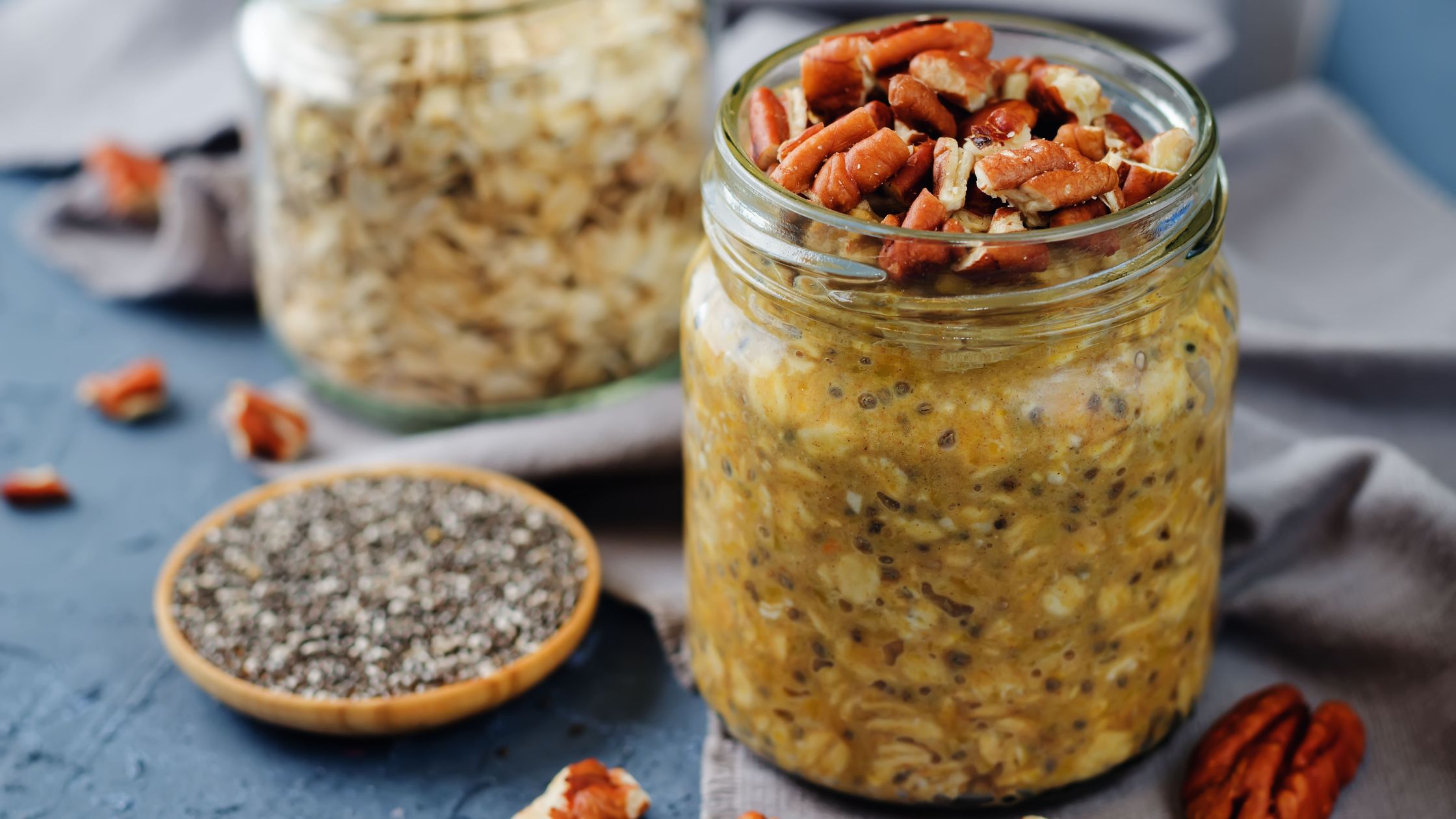
Instead of yogurt combine your old-fashioned oats with almond milk and pumpkin puree and let it sit overnight. If you’d like you can add a little maple syrup and top with chopped pecans for a fabulous Fall anytime treat.
When making a basic soup (onions, celery, and broth) add a healthy dollop of pumpkin puree and a little cashew milk to make a wonderful Fall soup. Garnish with pumpkin seeds for a little crunch and a nutritional boost
But those aren’t the only ways you can add pumpkin to your diet. Here are some of my favorite pumpkin recipes on the blog:
Sources
Jahan, Kausar et al. "Dietary Fiber As A Functional Food". Functional Food Products And Sustainable Health, 2020, pp. 155-167. Springer Singapore, doi:10.1007/978-981-15-4716-4_10.
Katagiri, Ryoko et al. "Dietary Fiber Intake And Total And Cause-Specific Mortality: The Japan Public Health Center-Based Prospective Study". The American Journal Of Clinical Nutrition, vol 111, no. 5, 2020, pp. 1027-1035. Oxford University Press (OUP), doi:10.1093/ajcn/nqaa002.
Miyazawa, Itsuko et al. "Relationship Between Carbohydrate And Dietary Fibre Intake And The Risk Of Cardiovascular Disease Mortality In Japanese: 24-Year Follow-Up Of NIPPON DATA80". European Journal Of Clinical Nutrition, vol 74, no. 1, 2019, pp. 67-76. Springer Science And Business Media LLC, doi:10.1038/s41430-019-0424-y.
ZX, Wang et al. "[Comparison Of Lutein, Zeaxanthin And Β-Carotene Level In Raw And Cooked Foods Consumed In Beijing]". Zhonghua Yu Fang Yi Xue Za Zhi [Chinese Journal Of Preventive Medicine], vol 45, no. 1, 2011, p. ., https://pubmed.ncbi.nlm.nih.gov/21418822/.
Eisenhauer, Bronwyn et al. "Lutein And Zeaxanthin—Food Sources, Bioavailability And Dietary Variety In Age‐Related Macular Degeneration Protection". Nutrients, vol 9, no. 2, 2017, p. 120. MDPI AG, doi:10.3390/nu9020120.
Jia, Yu-Ping et al. "The Pharmacological Effects Of Lutein And Zeaxanthin On Visual Disorders And Cognition Diseases". Molecules, vol 22, no. 4, 2017, p. 610. MDPI AG, doi:10.3390/molecules22040610.
Zhou, Yunping et al. "Association Of Carotenoids With Risk Of Gastric Cancer: A Meta-Analysis". Clinical Nutrition, vol 35, no. 1, 2016, pp. 109-116. Elsevier BV, doi:10.1016/j.clnu.2015.02.003.
Ge, Xiao-Xiao et al. "Carotenoid Intake And Esophageal Cancer Risk: A Meta-Analysis". Asian Pacific Journal Of Cancer Prevention, vol 14, no. 3, 2013, pp. 1911-1918. Asian Pacific Organization For Cancer Prevention, doi:10.7314/apjcp.2013.14.3.1911.
Huang, Xiaoyi et al. "Association Between Vitamin A, Retinol And Carotenoid Intake And Pancreatic Cancer Risk: Evidence From Epidemiologic Studies". Scientific Reports, vol 6, no. 1, 2016. Springer Science And Business Media LLC, doi:10.1038/srep38936.
Academic.Oup.Com, 2022, https://academic.oup.com/ajcn/article/96/5/1179S/4577133.
Stahl, Wilhelm, and Helmut Sies. "Β-Carotene And Other Carotenoids In Protection From Sunlight". The American Journal Of Clinical Nutrition, vol 96, no. 5, 2012, pp. 1179S-1184S. Oxford University Press (OUP), doi:10.3945/ajcn.112.034819.
Pandel, Ruža et al. "Skin Photoaging And The Role Of Antioxidants In Its Prevention". ISRN Dermatology, vol 2013, 2013, pp. 1-11. Hindawi Limited, doi:10.1155/2013/930164.
Whitehead, Ross D. et al. "You Are What You Eat: Within-Subject Increases In Fruit And Vegetable Consumption Confer Beneficial Skin-Color Changes". Plos ONE, vol 7, no. 3, 2012, p. e32988. Public Library Of Science (Plos), doi:10.1371/journal.pone.0032988.
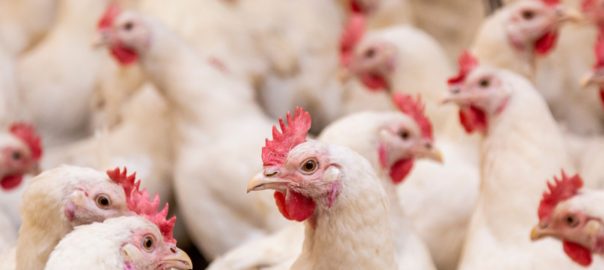
Antibiotics In The Food Supply
In 2011, the FDA denied petitions from consumers and other groups to restrict the use of several antibiotics in the food supply. Instead, the FDA issued legislation limiting the use of one type of antibiotic, cephalosporins.
This class of antibiotics is not given to animals directly in their feed but instead issued, usually, prior to slaughter. The FDA is concerned that this type of antibiotic is so important for use in humans (especially in life-threatening cases such as meningitis) that overuse in animals can potentially cause bacterial resistance, thereby limiting its usefulness in humans.
Since cephalosporins are a “last resort” type of drug it's important that their effectiveness not be compromised by over-usage in the animal industry. However, the FDA does not completely ban the use of this class of antibiotics, they merely limit it instead.
This is unfortunate since more than 70% of the antibiotic use in this country is used by the agriculture industry for food animals. Not because the animals are already sick, but to keep them from getting sick due to how they are raised; in unhealthy, high intensity settings. Unfortunately, this means that when you consume conventionally raised animal products, meat, dairy, and eggs, you are getting a dose of antibiotics. Just a dose, not a full course.
I was unable to find numbers indicating how much the cephalosporin limit reduces the total antibiotic usage in the animal production industry. Given the excessive antibiotic use in animal husbandry, I have to believe it provides only a modest reduction. It still means that the vast majority of antibiotics used in this country are used to allow producers to raise animals in inhumane, unhealthy, confined, and condensed operations. Where is our compassion as living, sentient beings for those beings whose purpose is to be raised for food?
I also question the logic behind an agency that is presumably supposed to monitor and protect the food supply which instead kowtows to major corporations and their bottom line.
I find myself skeptical that this “limited use” will actually be limited. I am now uneasily awaiting headlines proclaiming a new class of bacterial infection that has successfully overcome cephalosporins and is wreaking havoc in hospitals and medical settings across the country.
The best way to protect yourself and your family from antibiotic exposure in your meat is to purchase organic (since it's not allowed in organic production) and to source the best quality, most humane meat option you can find.
Sources
Gut check: Just say no to antibacterial burgers. Published online September 16, 2009. Accessed September 12, 2022. http://www.washingtonpost.com/wp-dyn/content/article/2009/09/15/AR2009091500736.htm
“Herd Health: Agriculture’S Role In The Global AMR Crisis”. Pharmaceutical Technology, 2019, https://www.pharmaceutical-technology.com/analysis/animal-antibiotics/.
Laskawy T. Scrooged: FDA gives up on antibiotic restrictions in livestock. Grist. Published December 29, 2011. https://grist.org/factory-farms/2011-12-28-scrooged-fda-gives-up-on-antibiotic-restrictions-in-livestock/
Jayaweera, Jayaweera Arachchige Asela Sampath, and Wikum Widuranga Kumbukgolla. “Antibiotic Resistance Patterns Of Methicillin-Resistant Staphylococcus Aureus (MRSA) Isolated From Livestock And Associated Farmers In Anuradhapura, Sri Lanka”. Germs, vol 7, no. 3, 2017, pp. 132-139. Asociatia Pentru Cresterea Vizibilitatii Cercetarii Stiintifice (ACVCS), doi:10.18683/germs.2017.1118.








